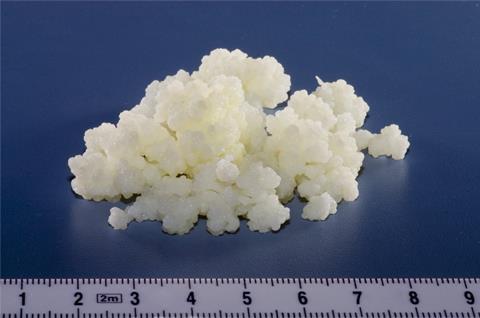It’s easy to grow at home, and its advocates say it has amazing health benefits. High in probiotics, people drink it to control digestive complaints. What is this creamy, cottage cheese-like substance, and why is it taking up residence in so many fridges?
Kefir is a fermented drink made by adding kefir grains to milk. Research has suggested that kefir grains are formed by the attachment of bacteria and yeast, which come together under biofilms in a matrix of proteins, sugars and lipids. Added to fresh milk, these grains ferment the milk, creating a slightly alcoholic, acidic and fizzy yoghurt-like drink. Following fermentation, little lactose remains in the milk, so most lactose-intolerant people are able to drink it.

Kefir has been popular in Russia for hundreds of years, with its origins in the Caucasus Mountains. It first garnered widespread acclaim in the early 20th Century – the first kefir drink was bottled and sold in Moscow in 1908. Kefir is now enjoying a second wave of popularity; a simple search returns almost 8 million webpages, most of which sing the praises of this microbial product. And with 100,000 videos on YouTube to help you get started making kefir, it’s definitely trending.
Although it’s easy to grow, kefir can be difficult to study because the bacteria and yeast form complex symbiotic relationships. Despite this, researchers were already investigating kefir for its effect on the microflora before the term probiotics was coined. In 1984, an early study in Journal of Applied Microbiology examined the make-up of the kefir grains. It showed that the yeasts and lactobacilli contained in kefir grains are held together in a matrix that is predominantly composed of carbohydrate produced by the bacteria. These carbohydrates separate out the yeast and bacteria in the grains, resulting in sheet-like structures, with yeast on one side and bacteria on the other.
Knowing the structure and function of kefir grains could open the door to useful applications. In 2007, research published in Journal of Applied Microbiology suggested that kefir could be used to “extend the shelf-life of dairy products with reduced or no salt content.”

Rather than being focused on the composition of the grains, most attention has been on the health benefits of kefir. The first long-term study of the effects of kefir on mouse gut microflora was published in Letters in Applied Microbiology in 2002. The study revealed that mice that consumed kefir had a significantly increased number of lactic acid bacteria in the gut. Kefir also decreased the number of sulfite-reducing clostridia by 100-fold.
The research so far supports some of the health benefit claims, which are in line with the reported benefits of probiotics. Reported benefits include boosting the immune system, killing Candida, improving lactose digestion and combating allergies. The calcium it contains may help strengthen bones, the tryptophan could help you relax, and the vitamins may have various health benefits.
While this is tempting to test out at home, the research on the health benefits of kefir is still limited, and many of the claims could also apply to milk or yoghurt. Yet sales of kefir have spiked: Lifeway, the company that supplies most of the USA’s kefir stock, reported sales of $130 million in 2014, up from $58 million in 2009.
So, what makes kefir so special? Perhaps the answer is in its alternative production. ‘Home-grown’ is enjoying a renaissance – more and more people are taking to their allotments, gardens and balconies to cultivate their own food, maintaining control over what they eat and supporting the growing field of agroecology. This approach to food extends to other areas too – urban beekeeping has seen a significant increase in recent years.
Kefir can be grown easily at home. Buying kefir grains online is straightforward, and the only ingredients you need in addition to the grains are milk and additives to enhance the taste of the drink. Kefir seems simple, cheap, healthy and appealing. Further research is needed to uncover the secrets of this drink, but for now millions of people are happy to test it out at home.
How to make kefir:
1. Buy kefir grains
2. Add to milk (this could be cow’s milk, but also goat’s, sheep’s or even camel’s milk)
3. Leave at room temperature for 24 hours (the longer you leave it, the more sour it will become)
4. Separate the curds and whey by straining with a (non-metallic) sieve
5. Flavour with fruit or other additives
6. Drink.








No comments yet